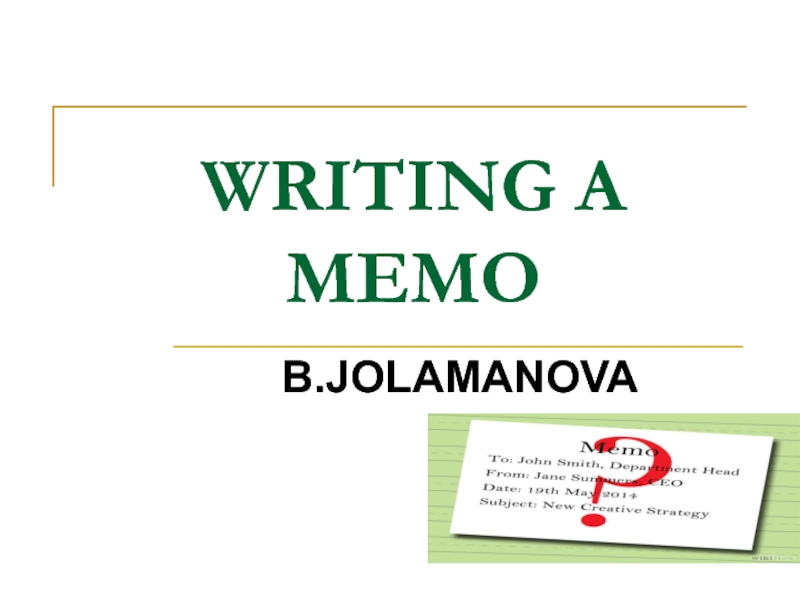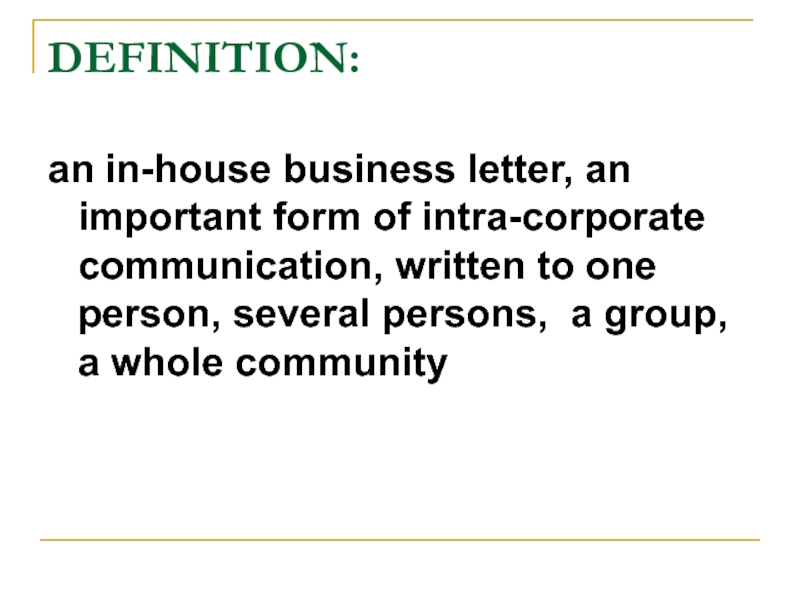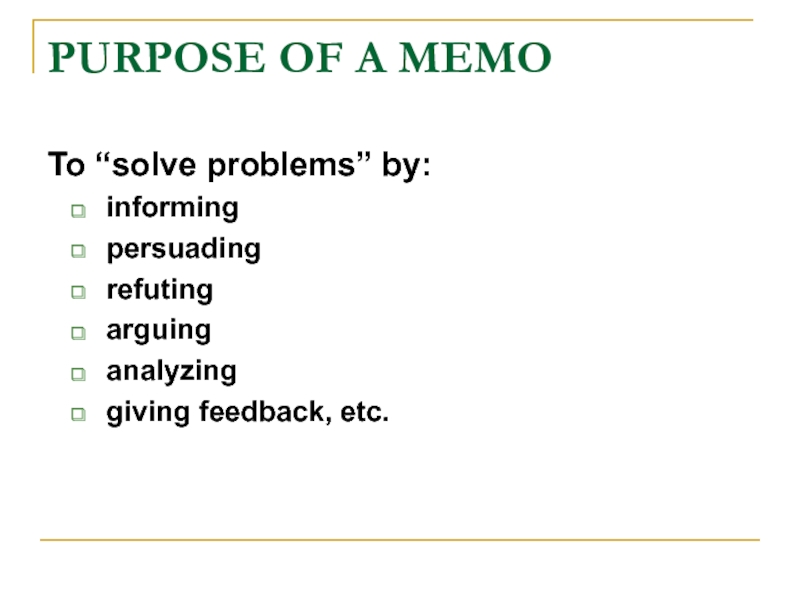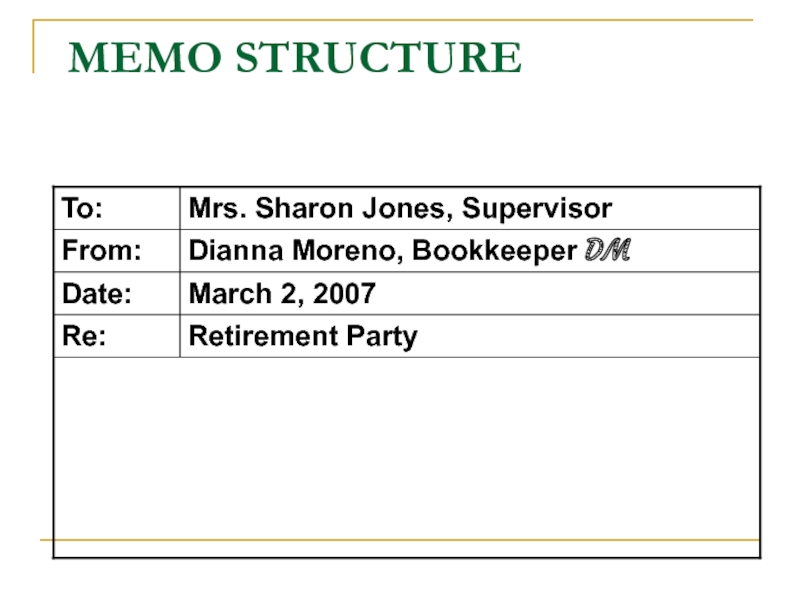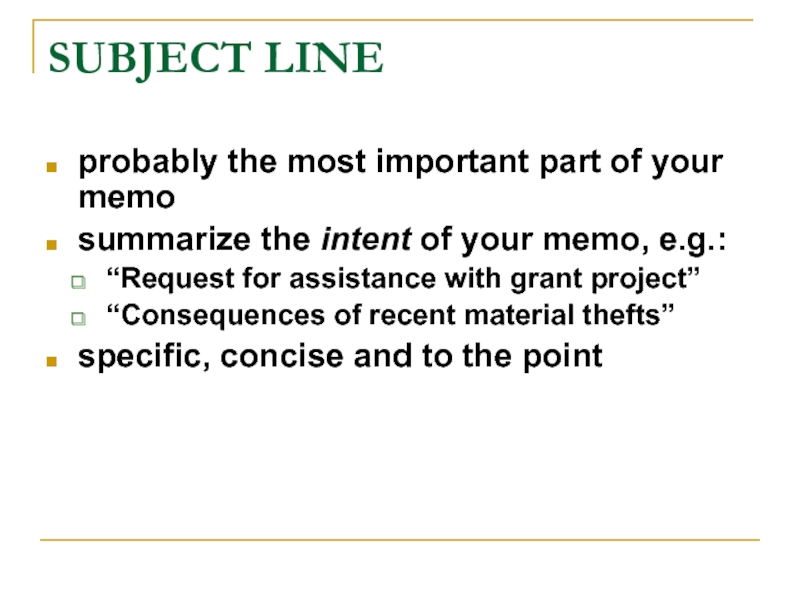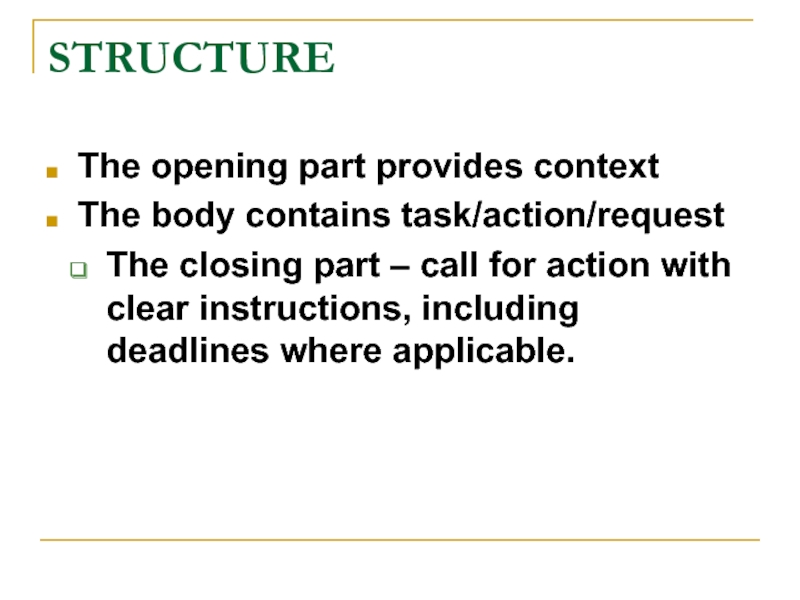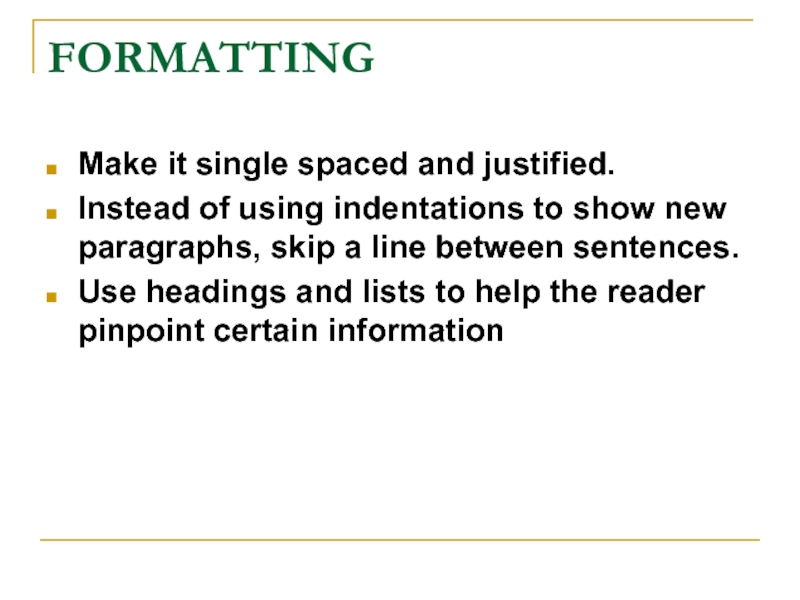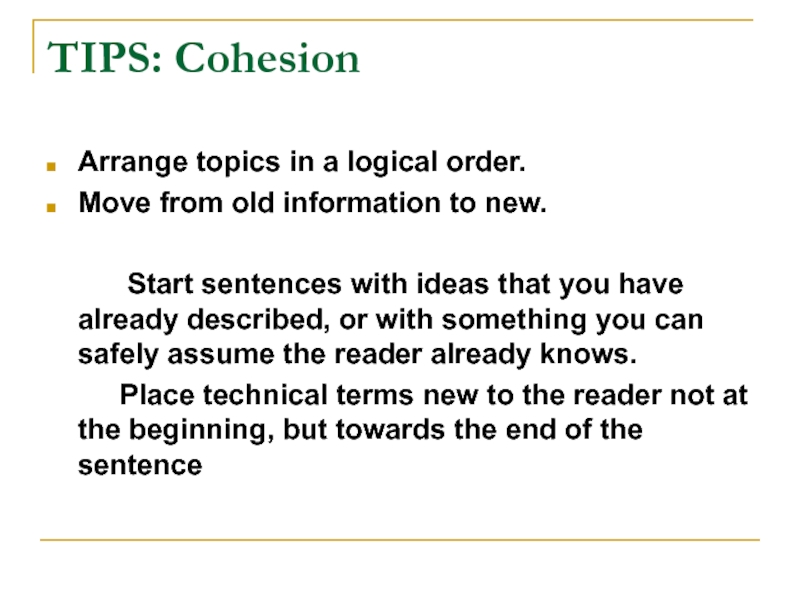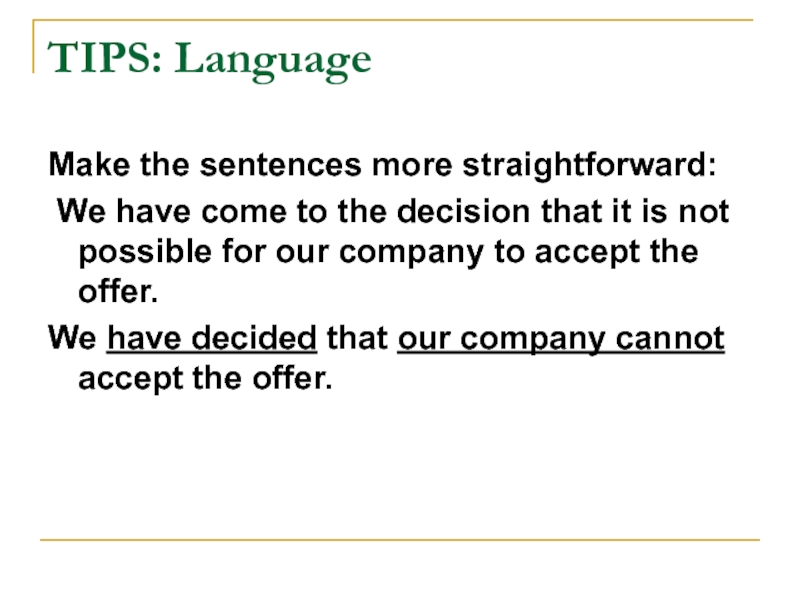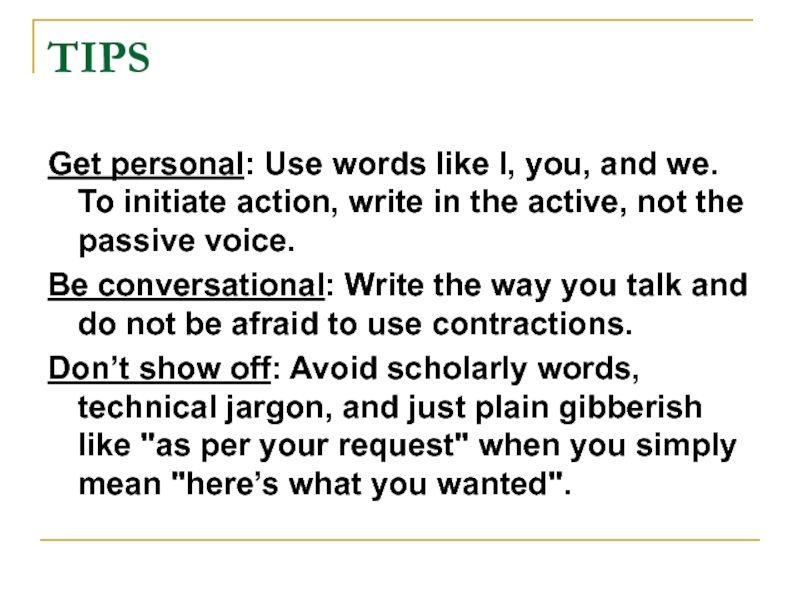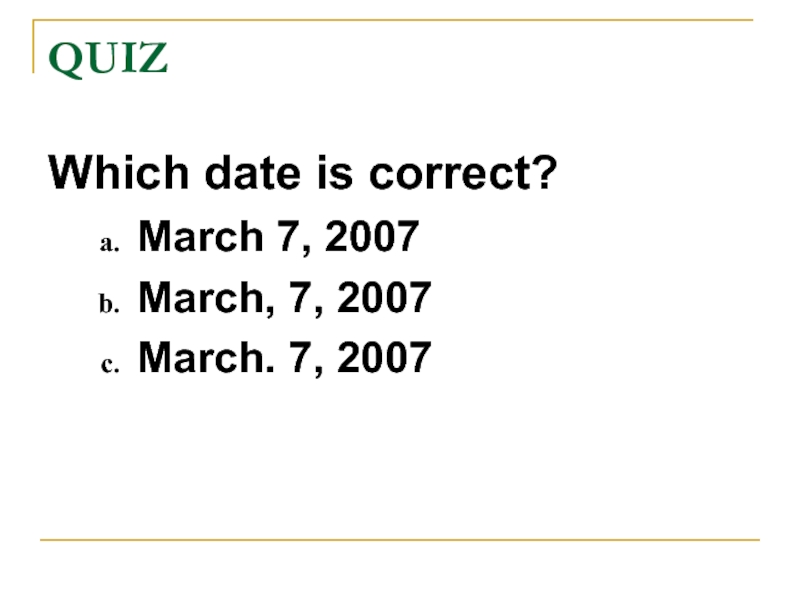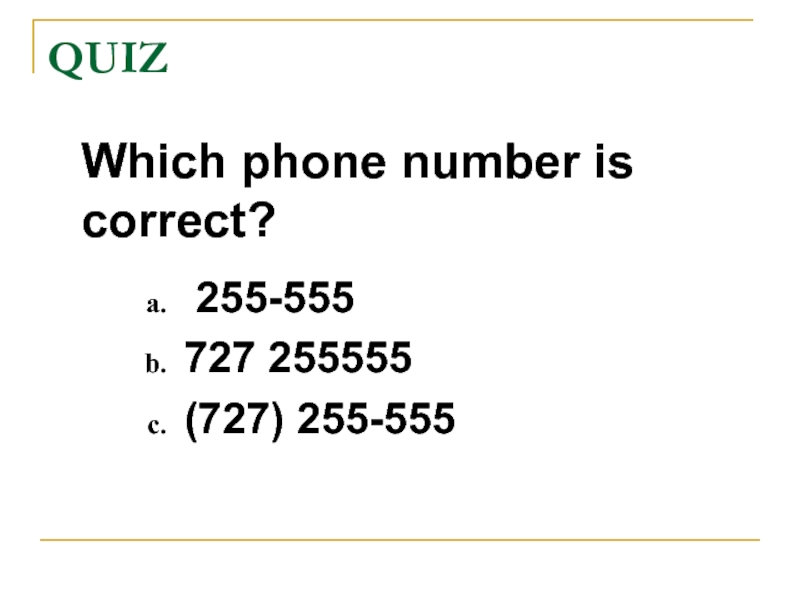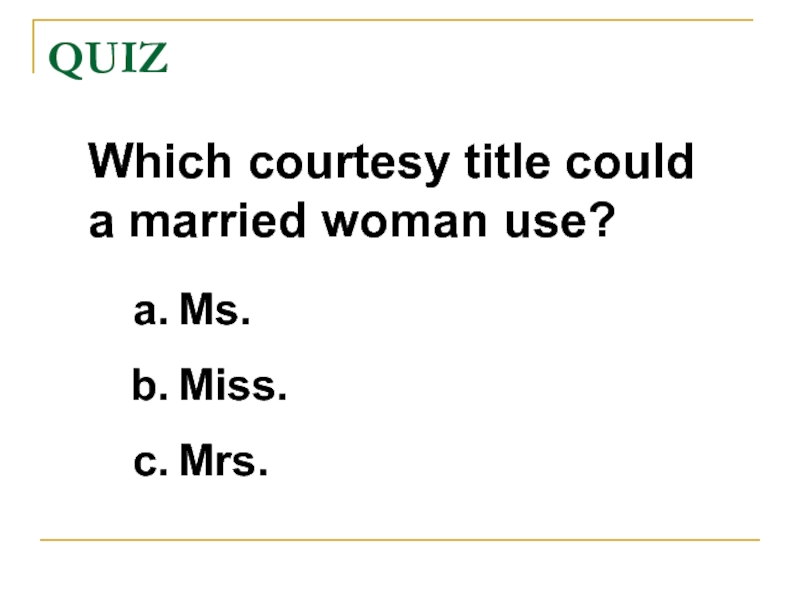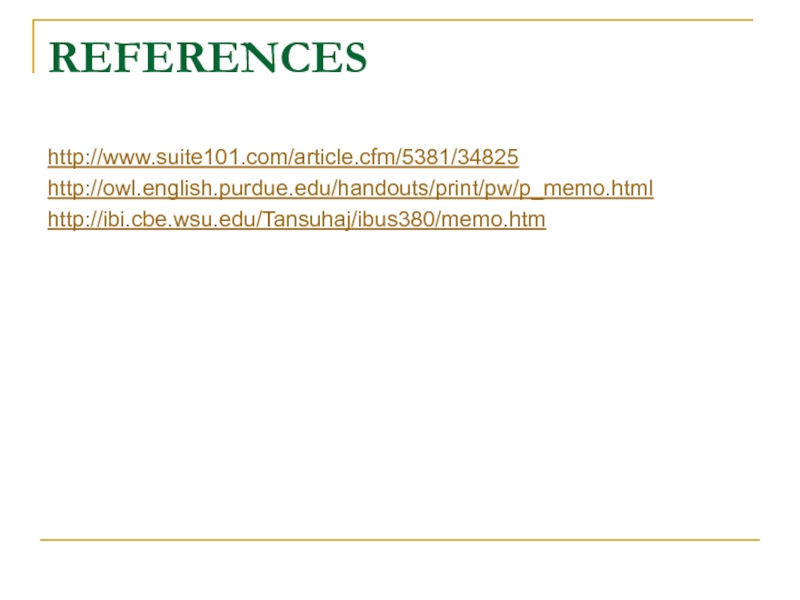- Главная
- Разное
- Дизайн
- Бизнес и предпринимательство
- Аналитика
- Образование
- Развлечения
- Красота и здоровье
- Финансы
- Государство
- Путешествия
- Спорт
- Недвижимость
- Армия
- Графика
- Культурология
- Еда и кулинария
- Лингвистика
- Английский язык
- Астрономия
- Алгебра
- Биология
- География
- Детские презентации
- Информатика
- История
- Литература
- Маркетинг
- Математика
- Медицина
- Менеджмент
- Музыка
- МХК
- Немецкий язык
- ОБЖ
- Обществознание
- Окружающий мир
- Педагогика
- Русский язык
- Технология
- Физика
- Философия
- Химия
- Шаблоны, картинки для презентаций
- Экология
- Экономика
- Юриспруденция
Writing a memo презентация
Содержание
- 1. Writing a memo
- 2. DEFINITION: an in-house business letter, an important
- 3. PURPOSE OF A MEMO To “solve problems”
- 4. MEMO VERSUS LETTER Reader: Communicating within your
- 5. MEMO STRUCTURE
- 6. SUBJECT LINE probably the most important part
- 7. STRUCTURE The opening part provides context The
- 8. FORMATTING Make it single spaced and justified.
- 9. MEMO SAMPLE
- 10. TIPS: Cohesion Arrange topics in a logical
- 11. TIPS: Language Make the sentences more straightforward:
- 12. TIPS: Language Use the active voice wherever
- 13. TIPS: Language: In view of the
- 14. TIPS Headings Numbering of paragraphs, points, instructions Tabulating when presenting statistics and figures
- 15. TIPS Get personal: Use words like I,
- 16. QUIZ Which date is correct? March 7, 2007 March, 7, 2007 March. 7, 2007
- 17. QUIZ Which initials are correct? D.M. D,M. DM
- 18. QUIZ 255-555 727 255555 (727) 255-555 Which phone number is correct?
- 19. QUIZ Which courtesy title could a married woman use? Ms. Miss. Mrs.
- 20. REFERENCES http://www.suite101.com/article.cfm/5381/34825 http://owl.english.purdue.edu/handouts/print/pw/p_memo.html http://ibi.cbe.wsu.edu/Tansuhaj/ibus380/memo.htm
Слайд 2DEFINITION:
an in-house business letter, an important form of intra-corporate communication, written
to one person, several persons, a group, a whole community
Слайд 3PURPOSE OF A MEMO
To “solve problems” by:
informing
persuading
refuting
arguing
analyzing
giving feedback, etc.
Слайд 4MEMO VERSUS LETTER
Reader:
Communicating within your organization
Communicating with sb outside the company
Signature/Closing: full, formal
Wordiness:
Memos are more straightforward, to make it easier for reader to get the info
Letters tend to be more dense, more formal
Слайд 6SUBJECT LINE
probably the most important part of your memo
summarize the intent
of your memo, e.g.:
“Request for assistance with grant project”
“Consequences of recent material thefts”
specific, concise and to the point
“Request for assistance with grant project”
“Consequences of recent material thefts”
specific, concise and to the point
Слайд 7STRUCTURE
The opening part provides context
The body contains task/action/request
The closing part –
call for action with clear instructions, including deadlines where applicable.
Слайд 8FORMATTING
Make it single spaced and justified.
Instead of using indentations to
show new paragraphs, skip a line between sentences.
Use headings and lists to help the reader pinpoint certain information
Use headings and lists to help the reader pinpoint certain information
Слайд 10TIPS: Cohesion
Arrange topics in a logical order.
Move from old information
to new.
Start sentences with ideas that you have already described, or with something you can safely assume the reader already knows.
Place technical terms new to the reader not at the beginning, but towards the end of the sentence
Start sentences with ideas that you have already described, or with something you can safely assume the reader already knows.
Place technical terms new to the reader not at the beginning, but towards the end of the sentence
Слайд 11TIPS: Language
Make the sentences more straightforward:
We have come to the
decision that it is not possible for our company to accept the offer.
We have decided that our company cannot accept the offer.
We have decided that our company cannot accept the offer.
Слайд 12TIPS: Language
Use the active voice wherever possible
Write in 1st person, i.e.
“I cannot accept your proposal”
Use action verbs instead of phrases
NOT OK: “We made a payment of $15,000”
OK: “We paid $15,000.”
Use action verbs instead of phrases
NOT OK: “We made a payment of $15,000”
OK: “We paid $15,000.”
Слайд 13TIPS:
Language:
In view of the fact that we will lose a big
contract next year, we have to cut expenses.
Since we will lose a big contract next year, we have to cut expenses.
Since we will lose a big contract next year, we have to cut expenses.
Слайд 14TIPS
Headings
Numbering of paragraphs, points, instructions
Tabulating when presenting statistics and figures
Слайд 15TIPS
Get personal: Use words like I, you, and we. To initiate
action, write in the active, not the passive voice.
Be conversational: Write the way you talk and do not be afraid to use contractions.
Don’t show off: Avoid scholarly words, technical jargon, and just plain gibberish like "as per your request" when you simply mean "here’s what you wanted".
Be conversational: Write the way you talk and do not be afraid to use contractions.
Don’t show off: Avoid scholarly words, technical jargon, and just plain gibberish like "as per your request" when you simply mean "here’s what you wanted".
